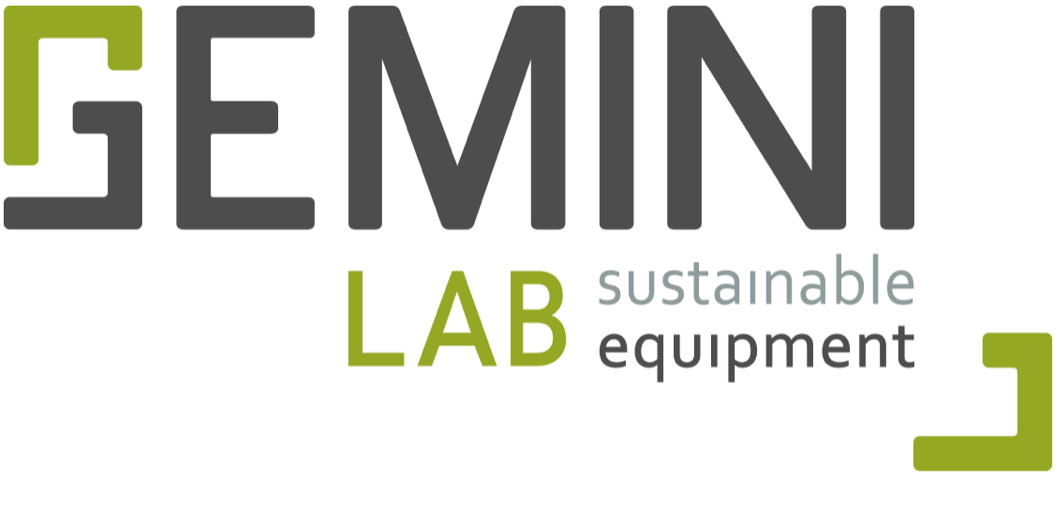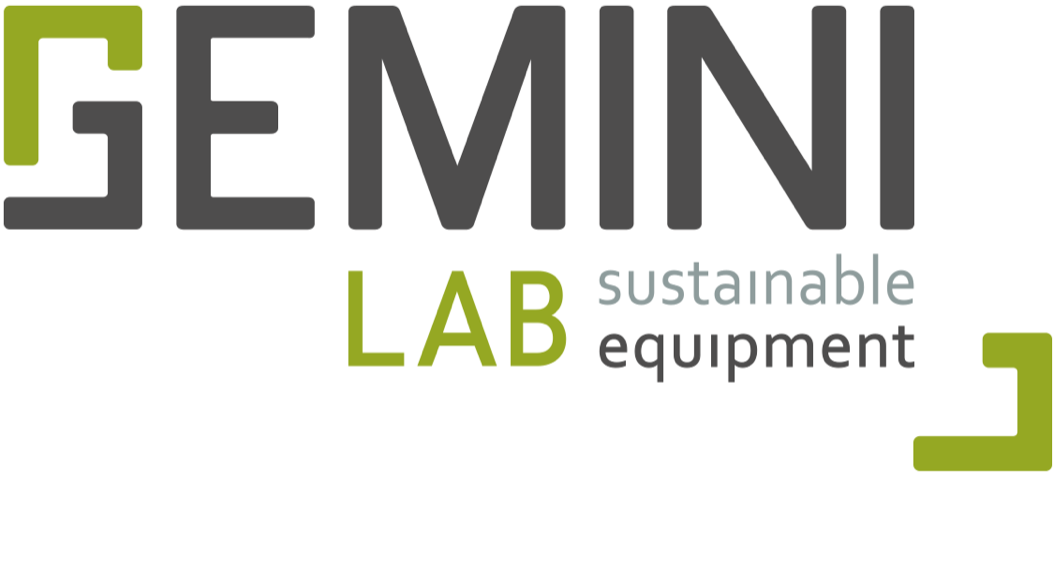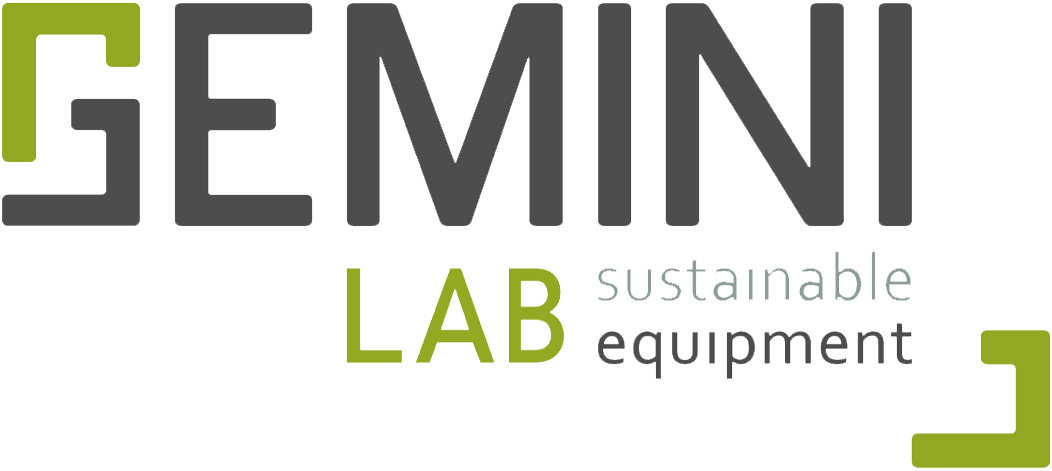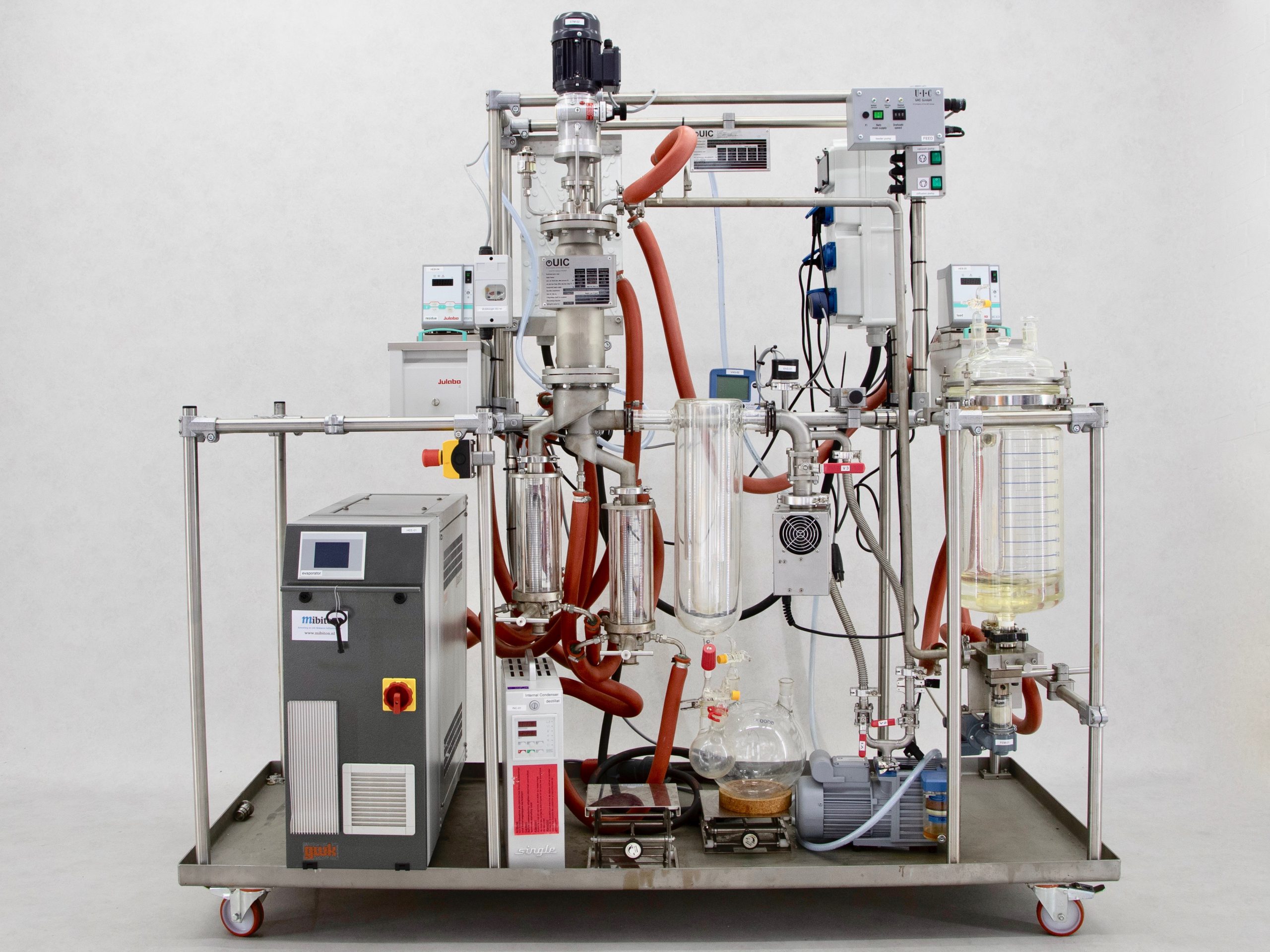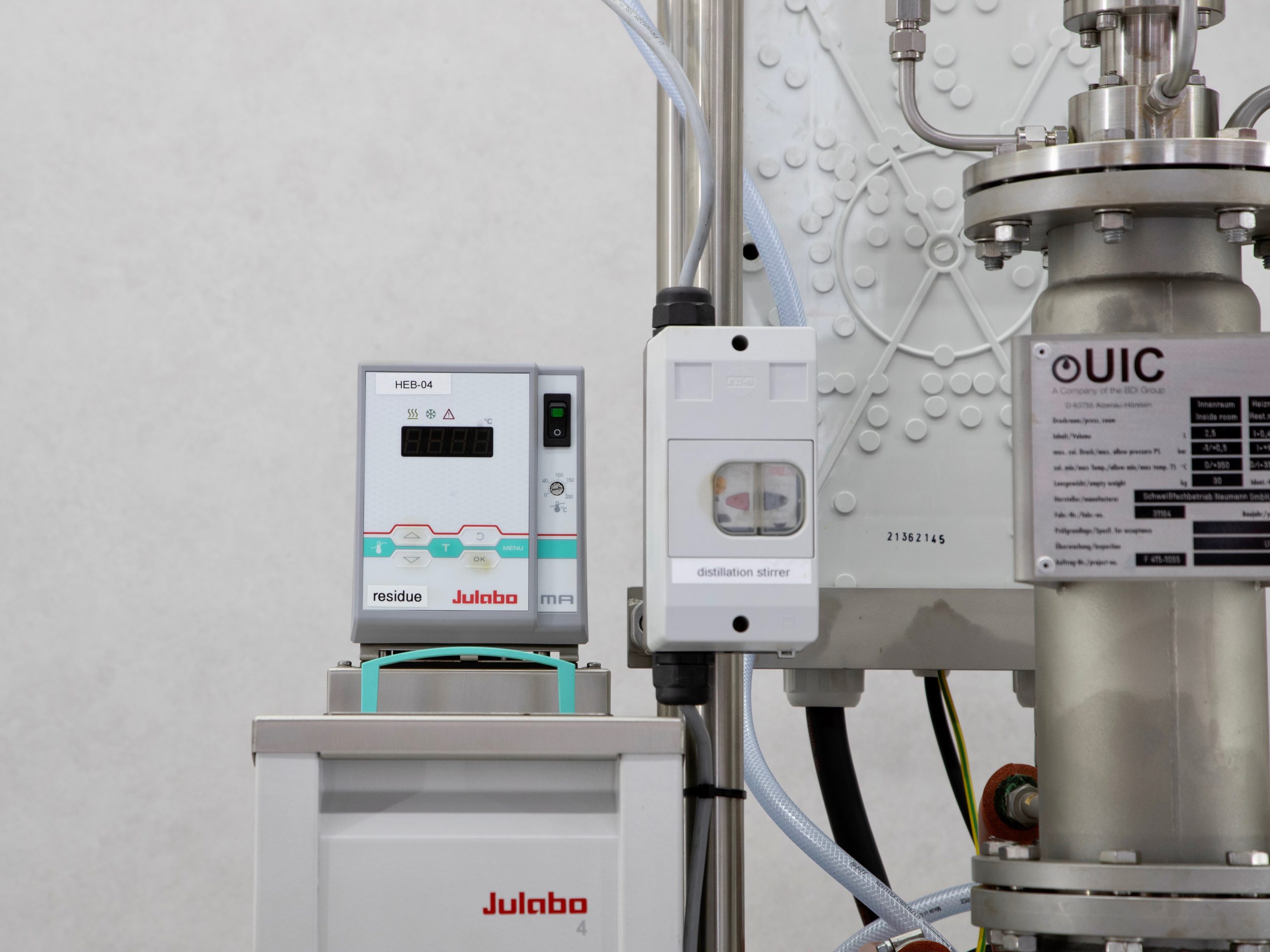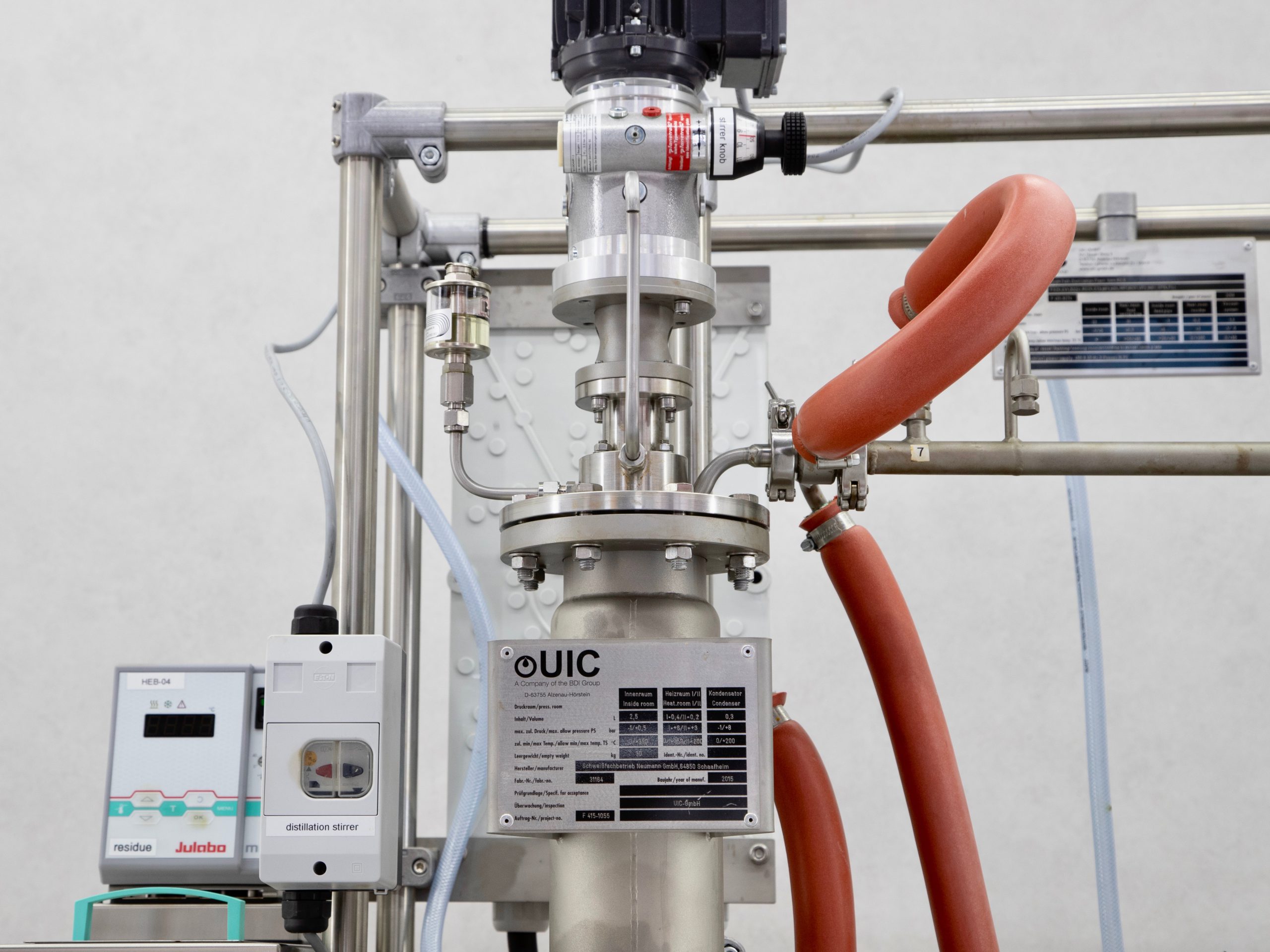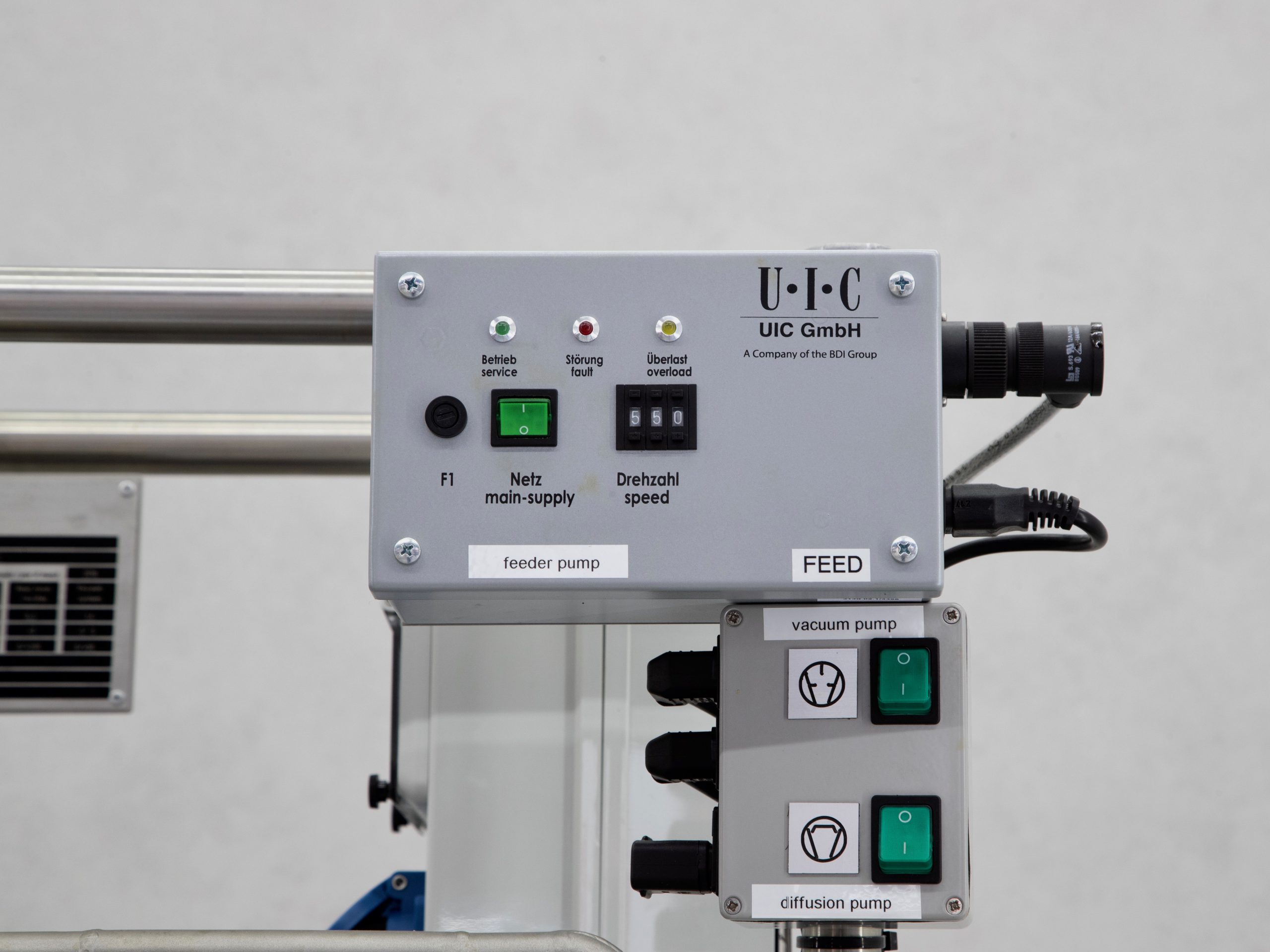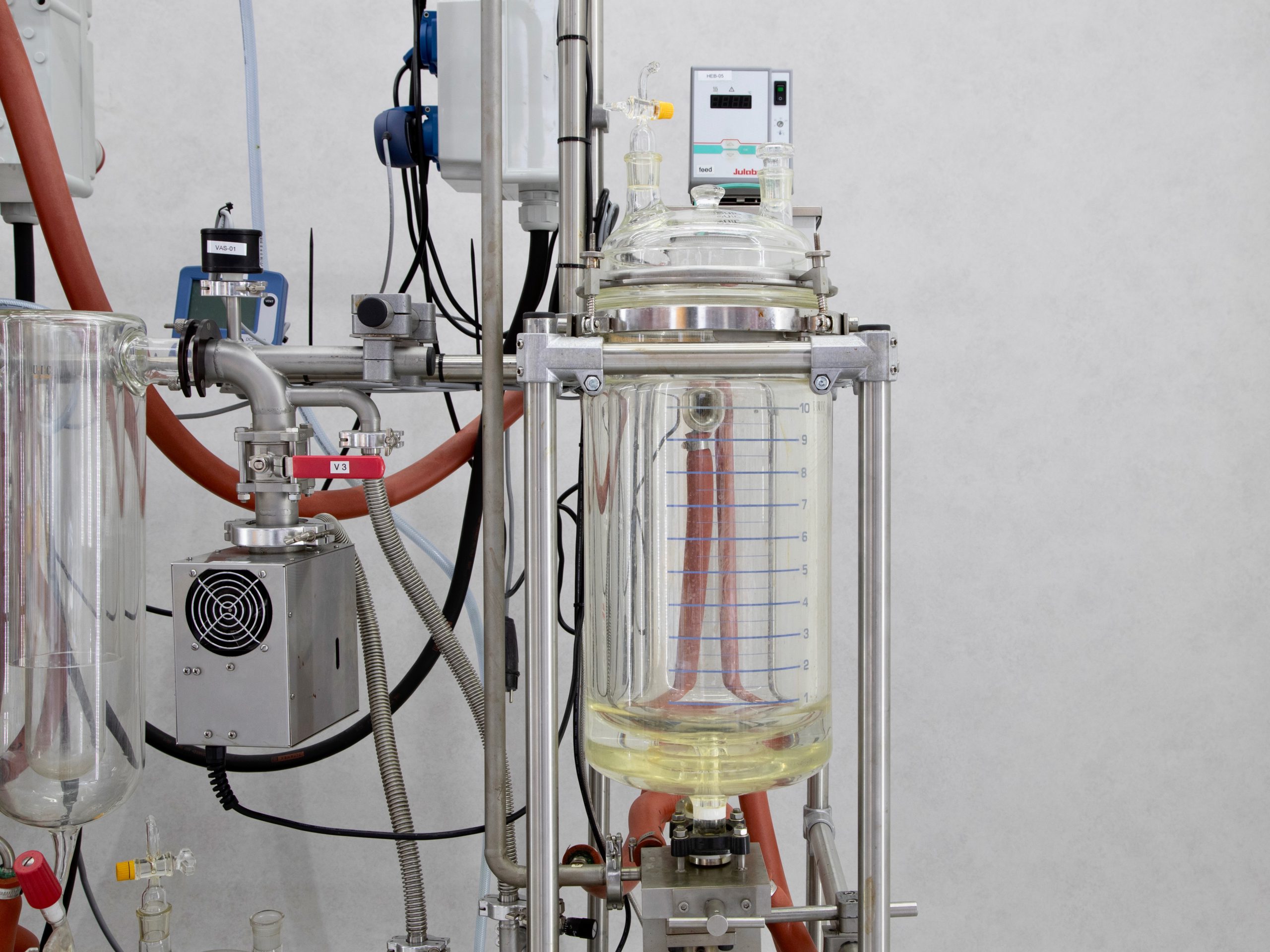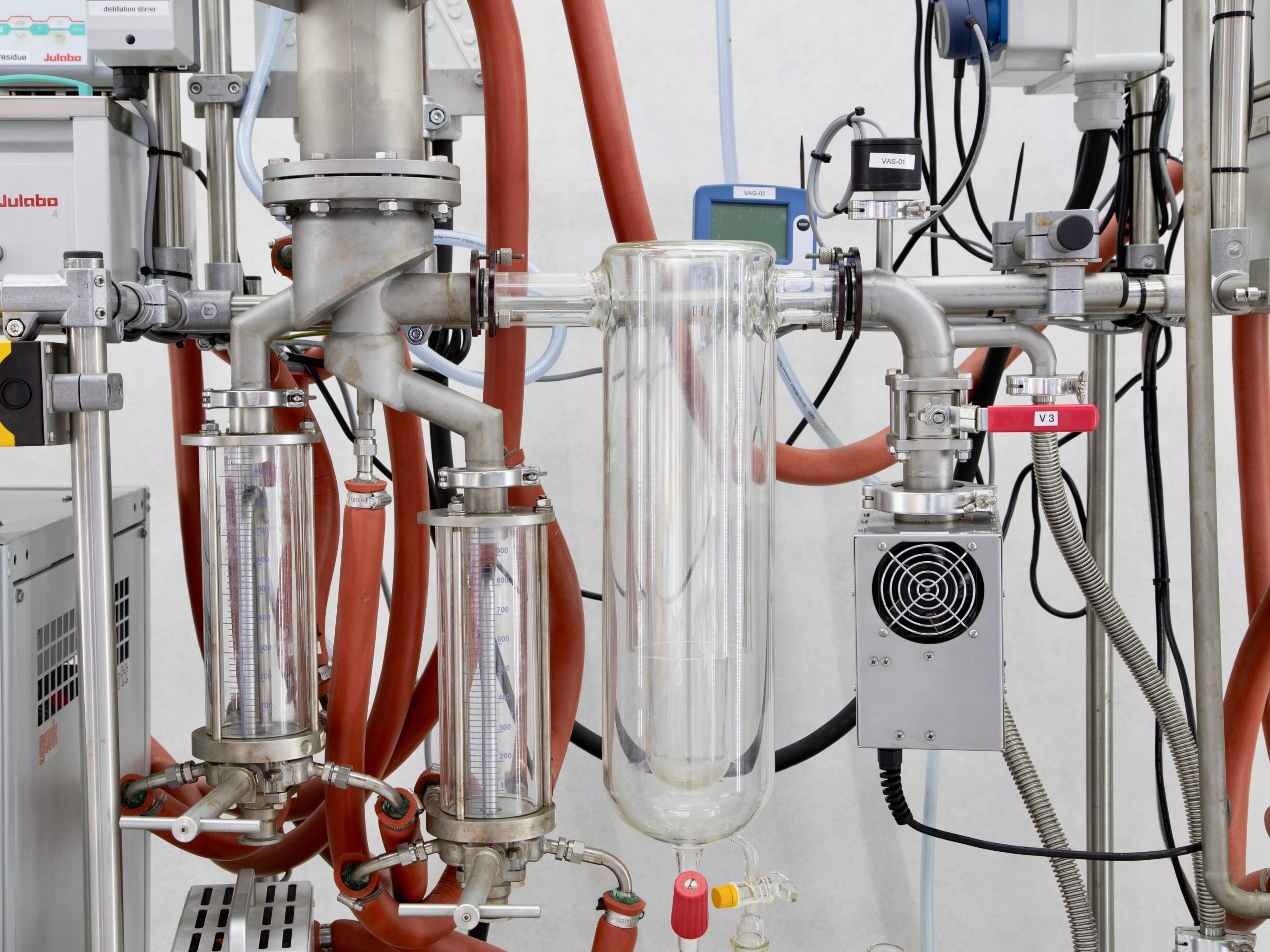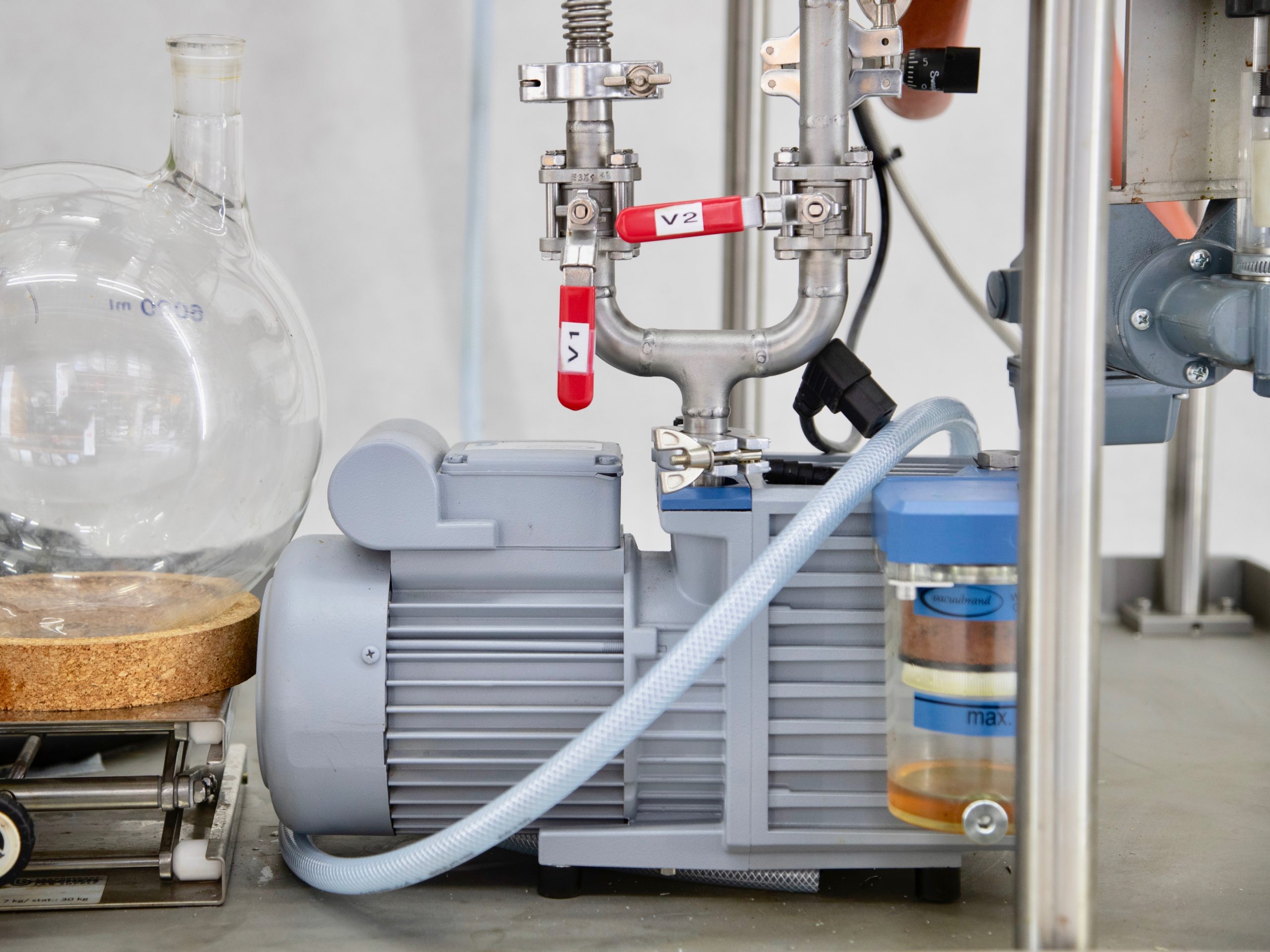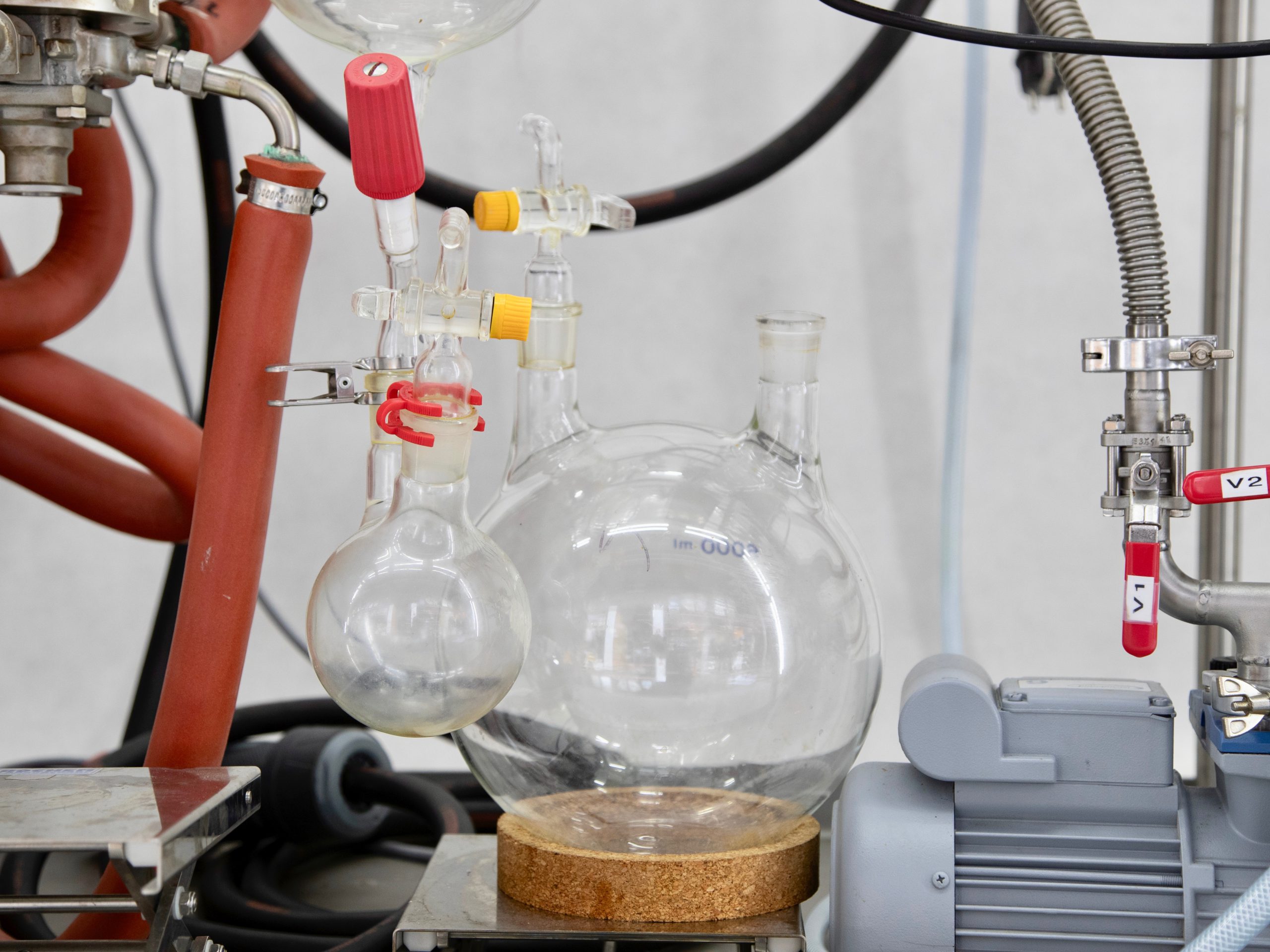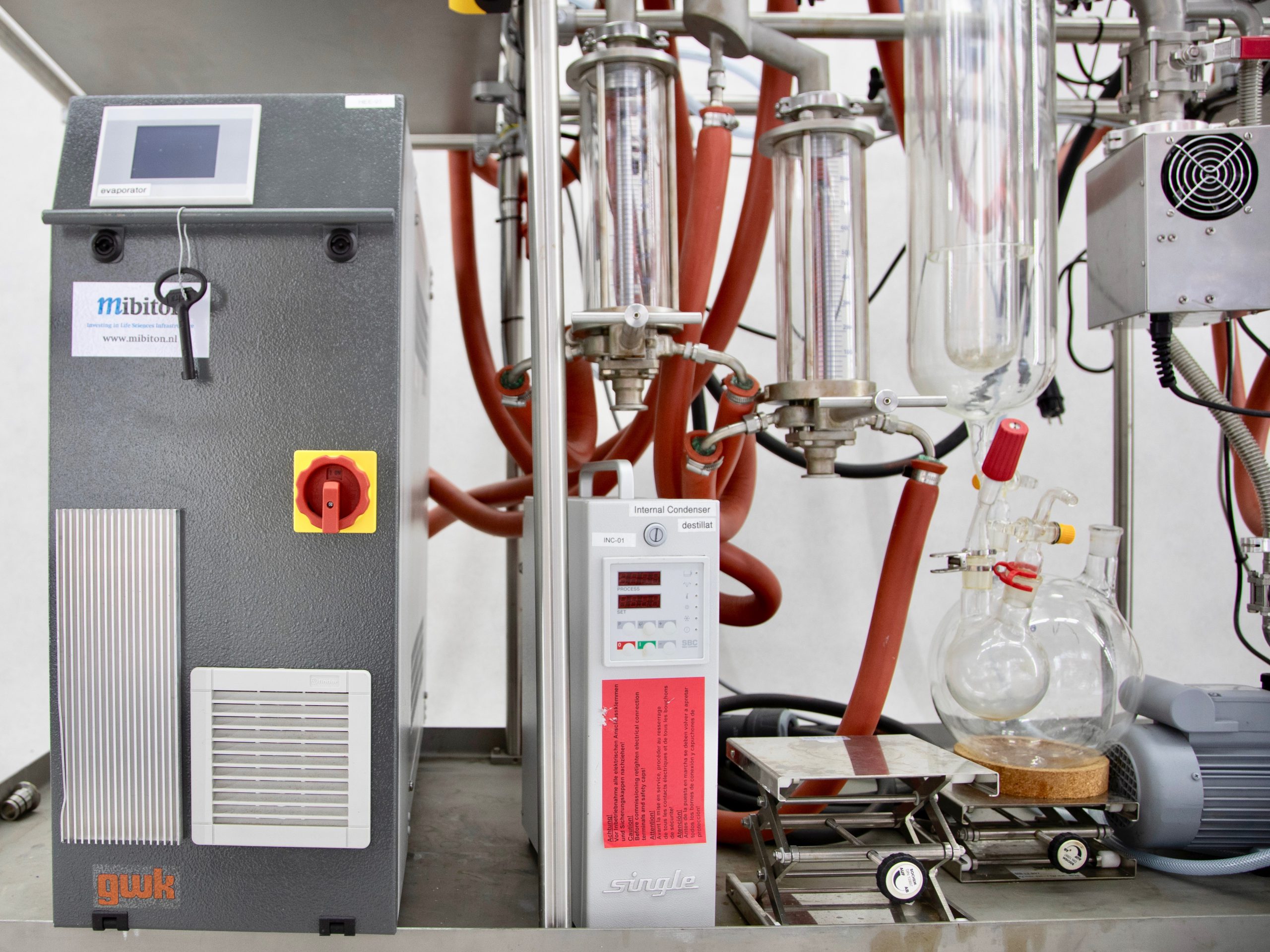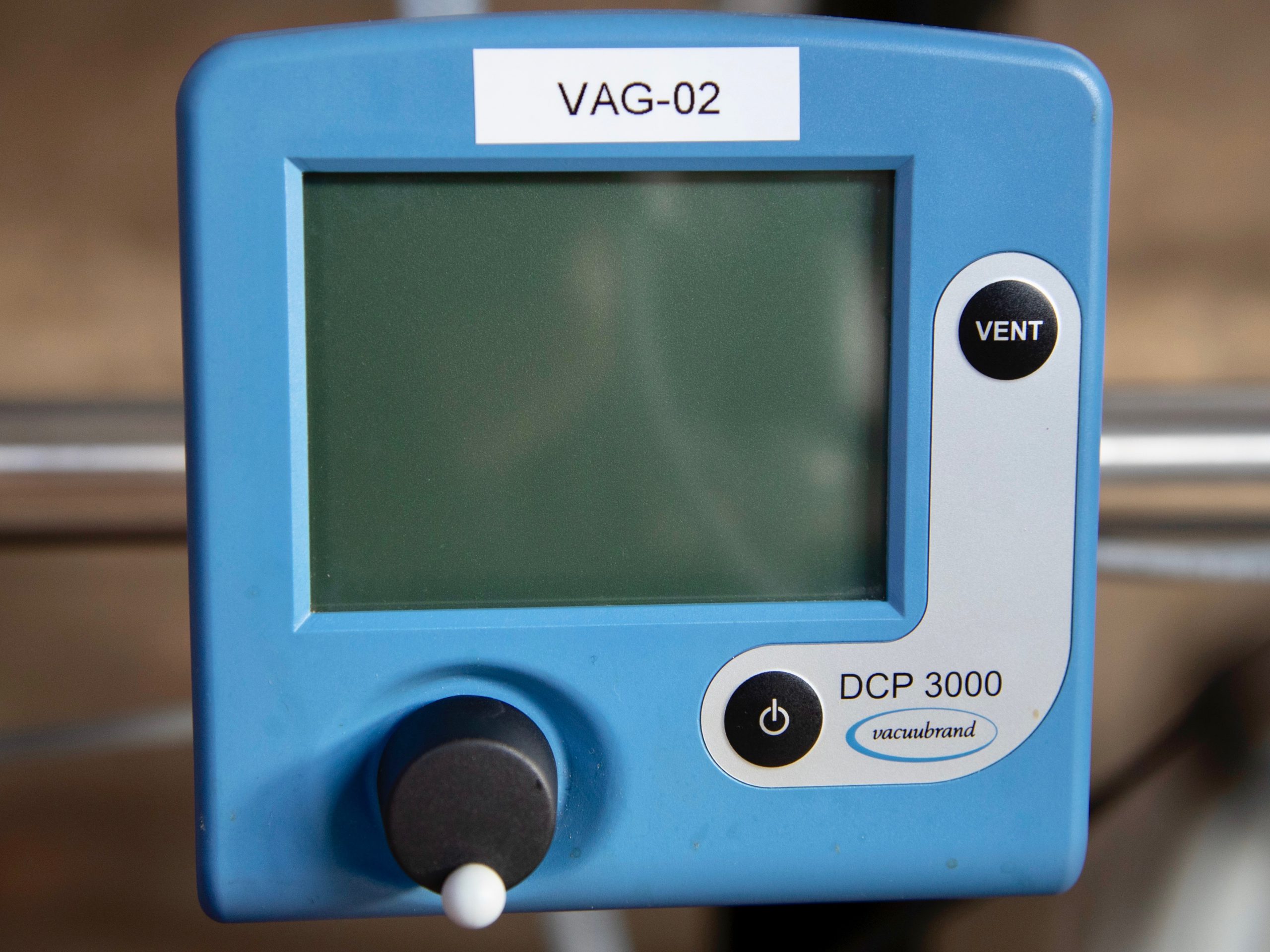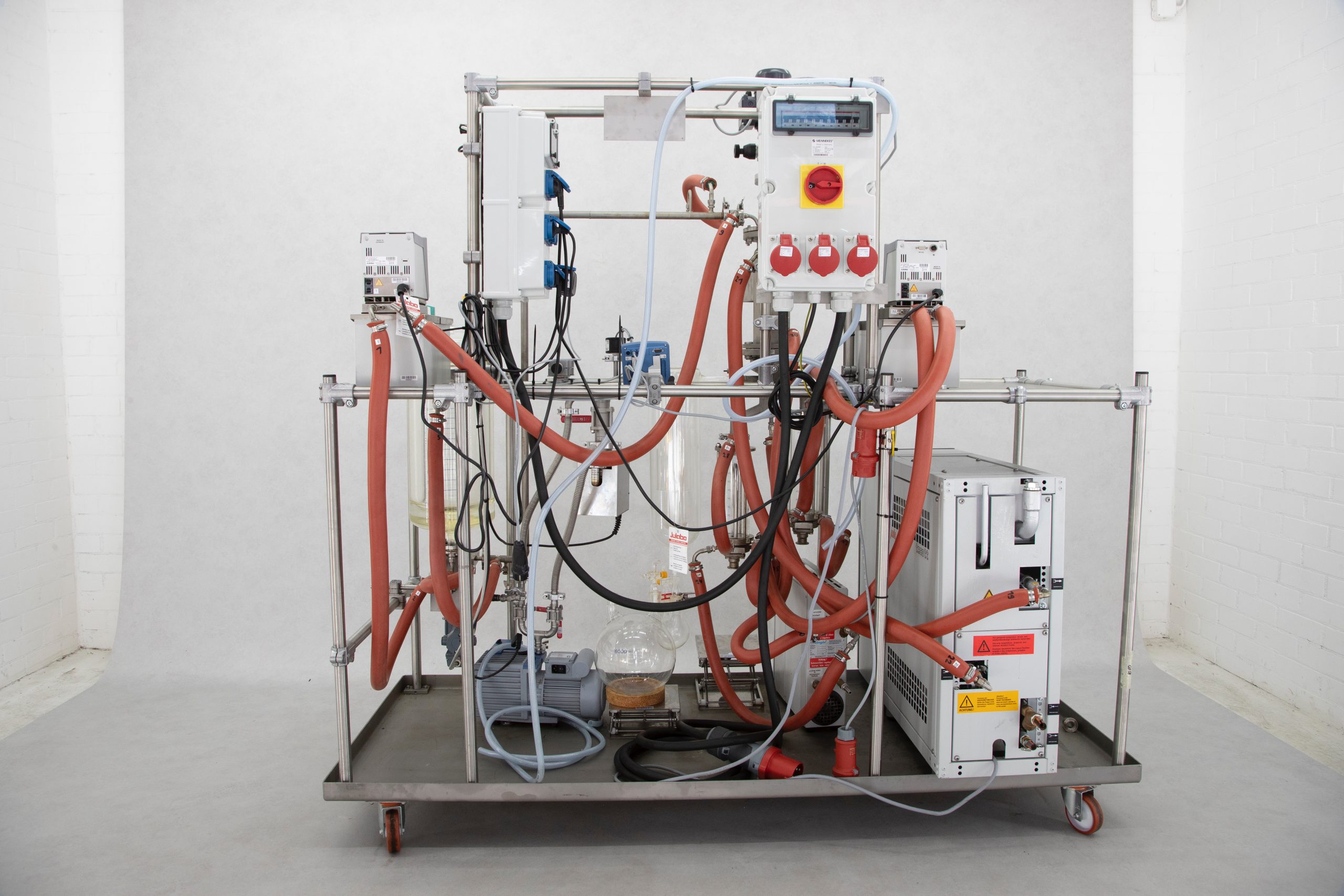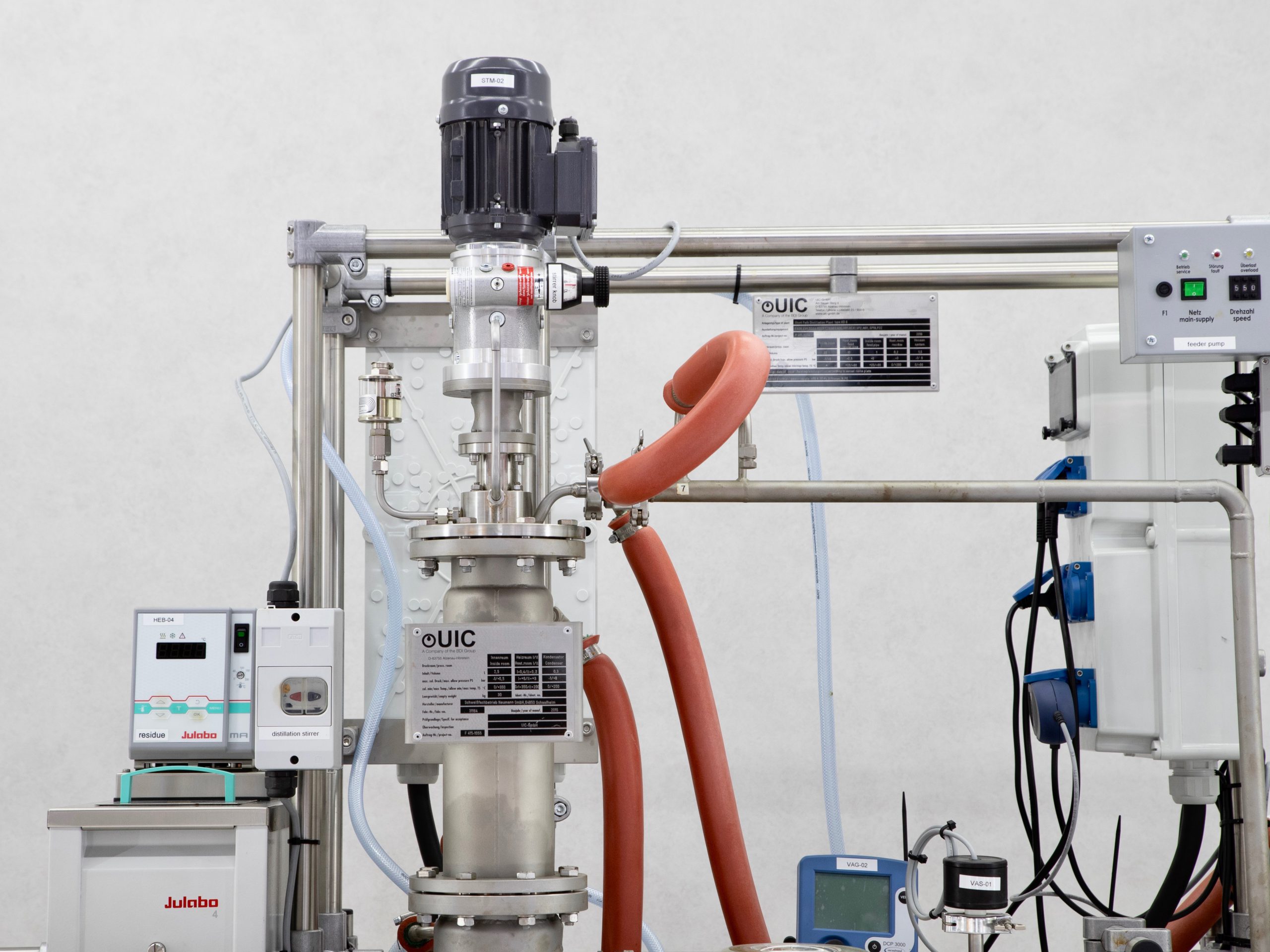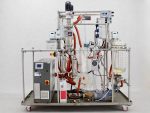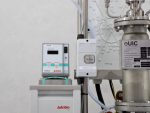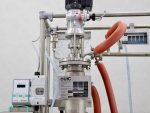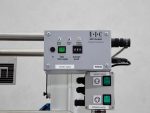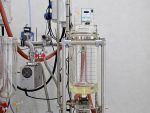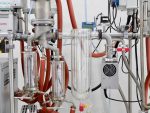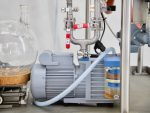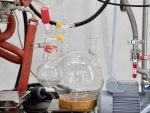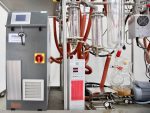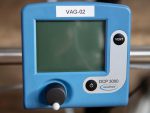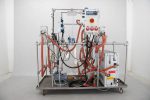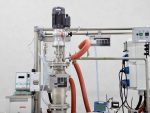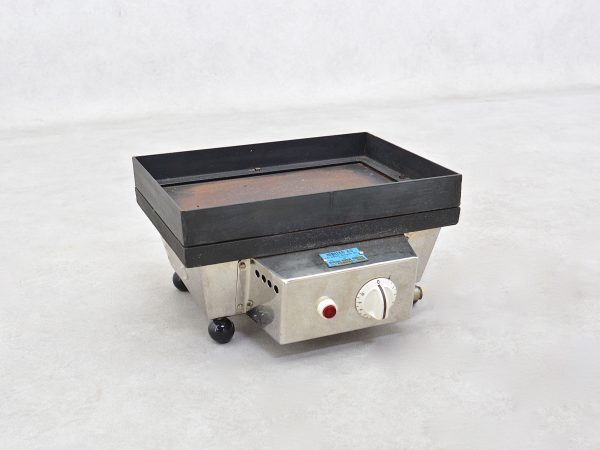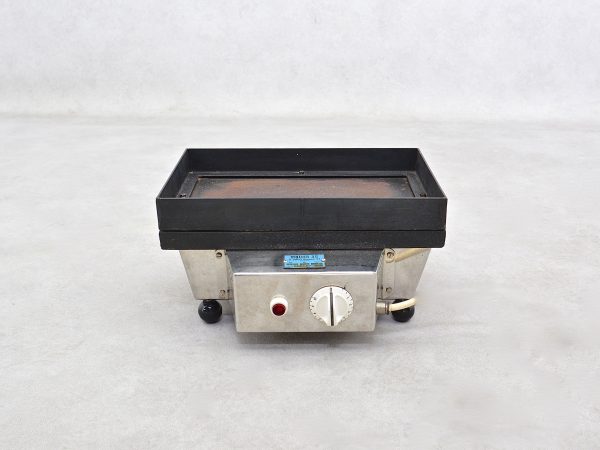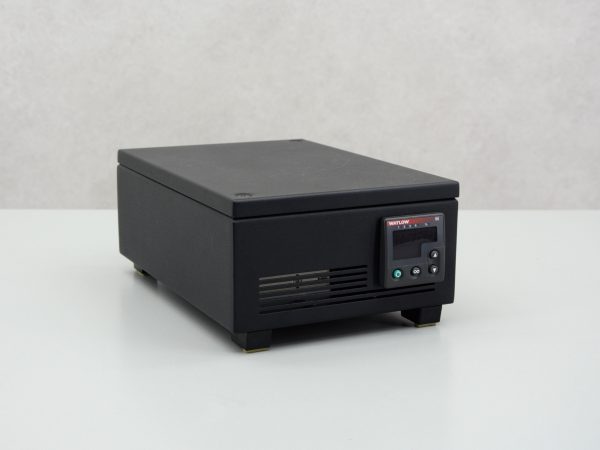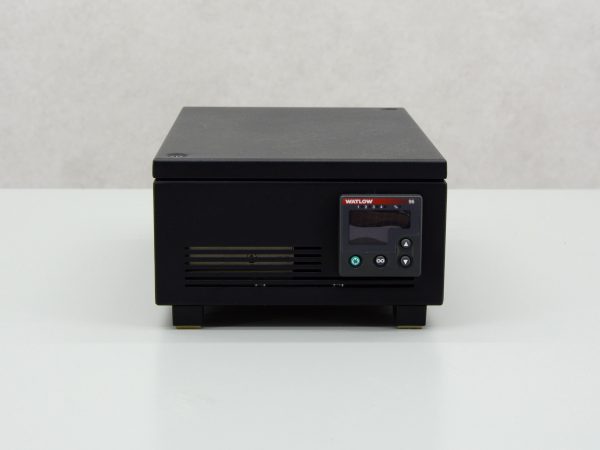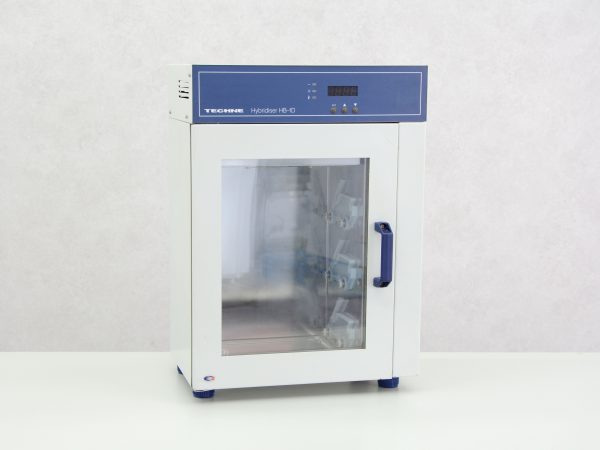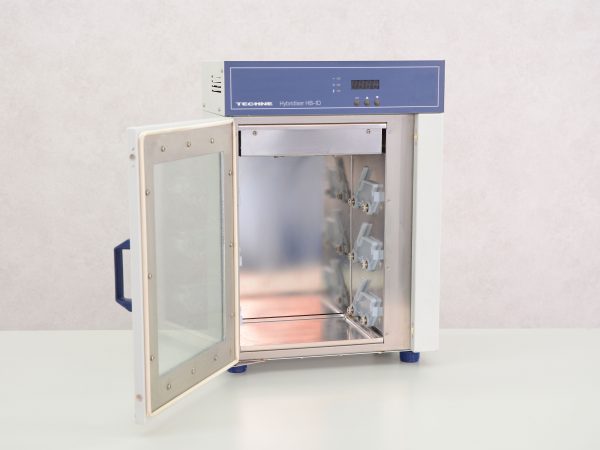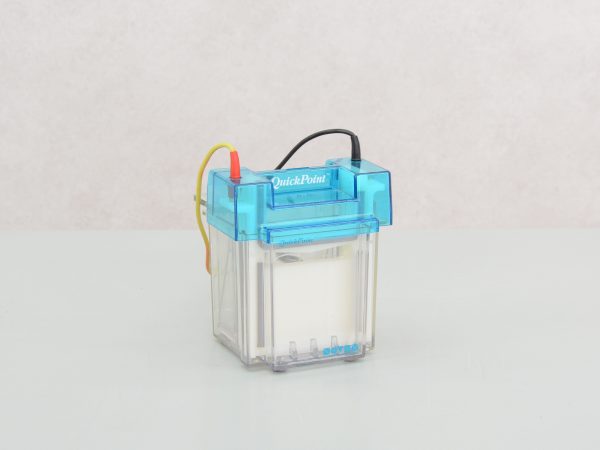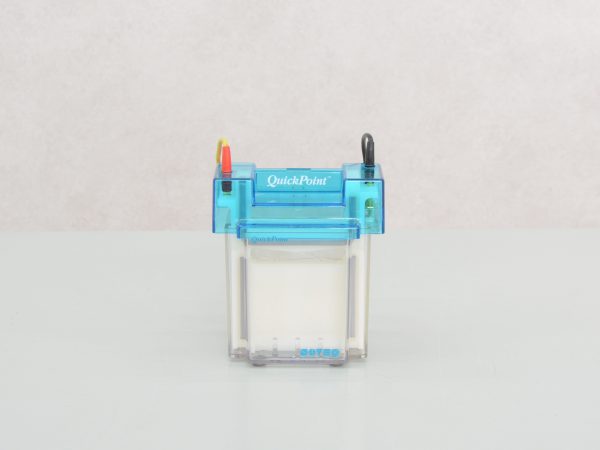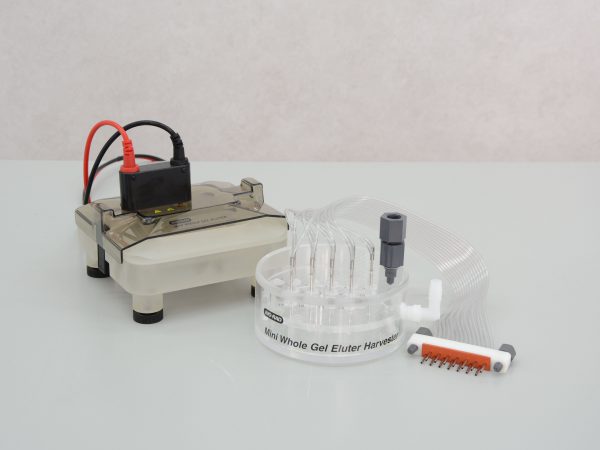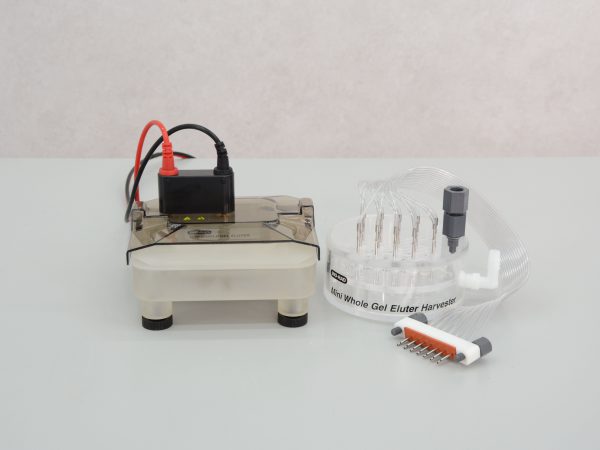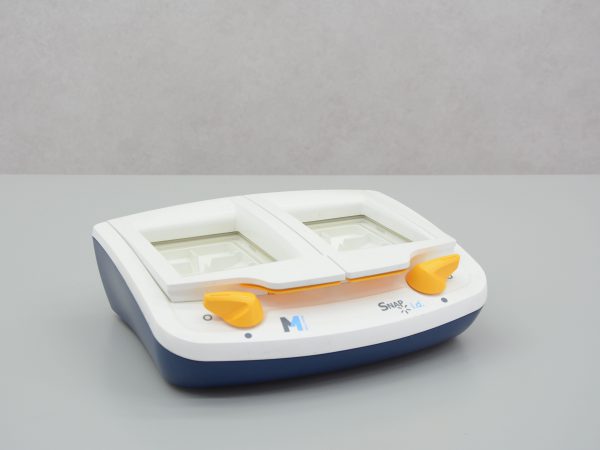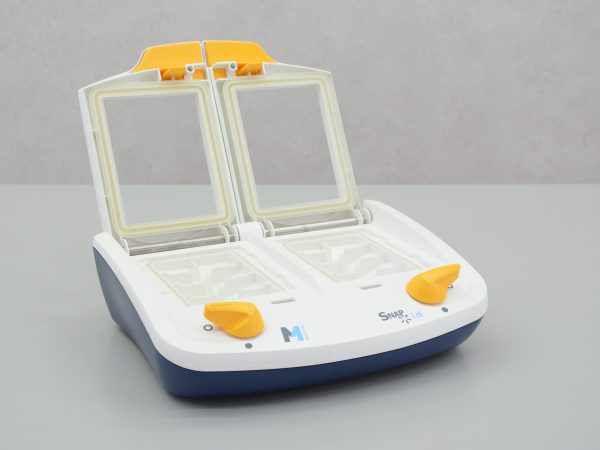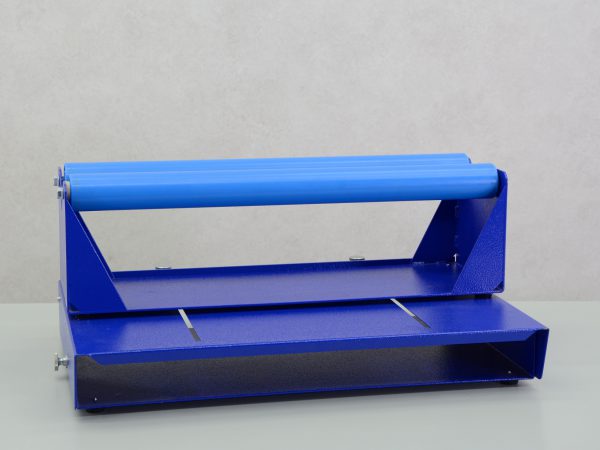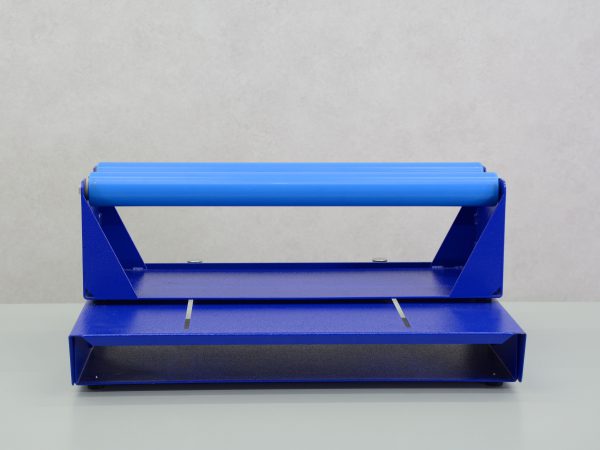The UIC KD6-EA100 is used for short-path distillation to separate mixtures under very mild conditions, as samples are only heated for a short period of time. This system consists of the following components:
- Heatable supply system with gear pump and dosing vessel
- Heat exchanger, degassing column EA100
- Vacuum system for degasser with external condenser, vacuum pump and pressure measuring device
- Distillator KD6 (fully heatable)
- Distillate and residue removal system: intermediate vessel and glass flask for distillate
- Vacuum pump system for KD6 with cold trap, optional oil diffusion pump, vane pump and pressure measuring device
- Mobile rack
Technical specifications
Voltage: 400V, 50Hz
Volumes
- Inside room : 22 L
- Heating room feed pipe : 10 L
- Inside room feed pipe : 1 L
- Heating room residue : 0.2 L
- Vacuum system : 0.5 L
Maximum allowable pressure
- Inside room : -1/+0 bar
- Heating room feed pipe : +0.5 bar
- Inside room feed pipe : +6 bar
- Heating room residue : +3 bar
- Vacuum system : -1/0 bar
Maximum allowable temperature
- Inside room : -1/+0 ºC
- Heating room feed pipe : +0.5 ºC
- Inside room feed pipe : +6 ºC
- Heating room residue : +3 ºC
- Vacuum system : -1/0 ºC
External dimensions (W) x (D) x (H): 195 x 80 x 202 cm
Principle and advantages of short-path distillation
Short-path-distillation is a continuously operating distillation method which is, due to the operation principle, the most gentle kind of distillation.
Location of the condenser inside of the evaporator allows to reduce the operation pressure down to 0.001 mbar. The boiling point of a mixture to be distilled can therefore be reduced accordingly. As a result, the thermal degradation of heat sensitive components is reduced drastically or even avoided completely.
Core of the plant is the short-path-evaporator. Within the evaporator an internal condenser is placed in the centre. The feed product flows down on the inner surface of the evaporator and is mixed and agitated by use of a rotating roller wiper system. This generates a thin layer of product (thin film) which flow down by gravity and is mixed and agitated continuously.
Non-volatile components, the so-called residues, leave the evaporator at its lower end and are collected into a residue-cup from where the residue is guided to the connected receiver. The generated vapours are condensed at the cooled internal condenser from which the distillate flows downwards to the other receiver. Components which could not be condensed on the internal condenser are sucked away and are condensed within the cold trap.
Usage of short-path-distillation enables user to separate mixtures by distillation at very gentle conditions because of:
- Very short residence times, the product is only heated during a short period while it is in contact with the heated surface for only a few seconds.
- Short and non-restricted path for vapours.
The total pressure above the liquid to be evaporated can be reduced down to 0.001 mbar (depending on application) and can reach the range where molecular distillation starts. As a result, the necessary boiling temperature (which depends on pressure) can be reduced significantly.
Indirect heating by use of circulation of heat-transfer fluid; temperatures are under control all time and thus over-heating (which might cause product degradation) is avoided.
Usage of a degasser stage allows to strip of some percent of high volatiles (up to 3%, depending on product and application) and thus allowing to achieve lower pressure during the short-path-evaporation stage. The product to be degassed needs to be superheated before it is fed into a degasser (“flash-box”) where the hight volatile components are evaporated. The generated vapours are guided to an external condenser, while the remaining residue is transferred to the following stage.
